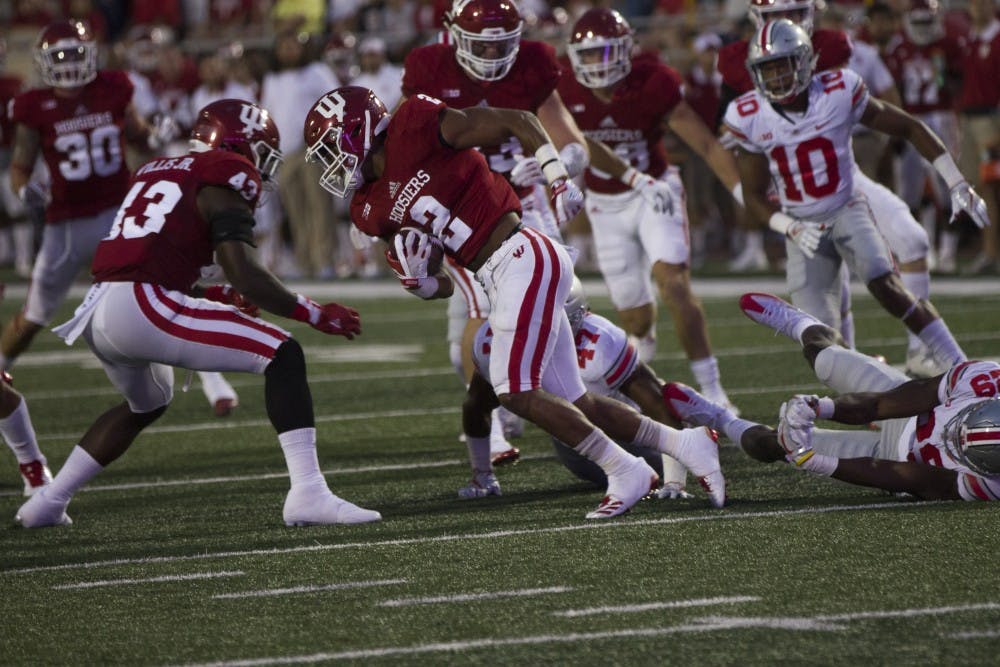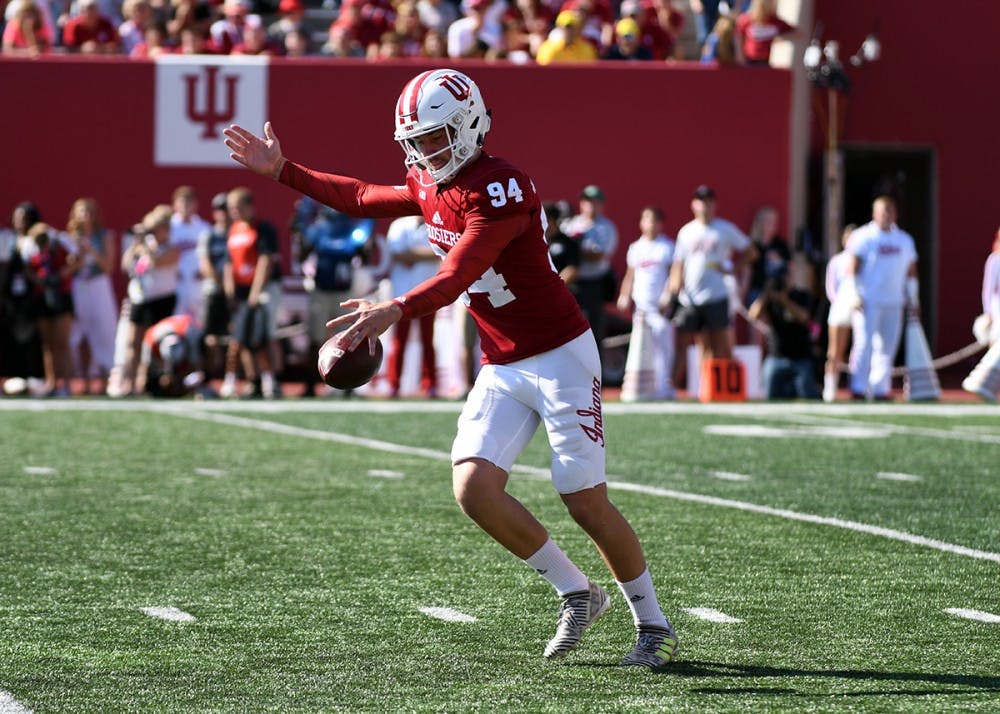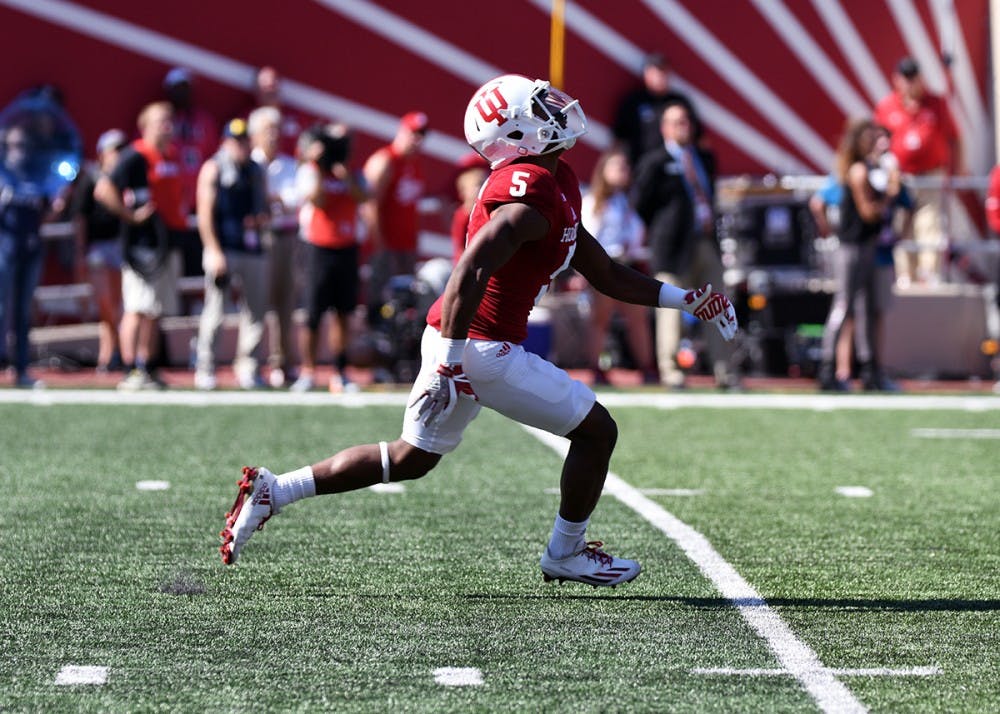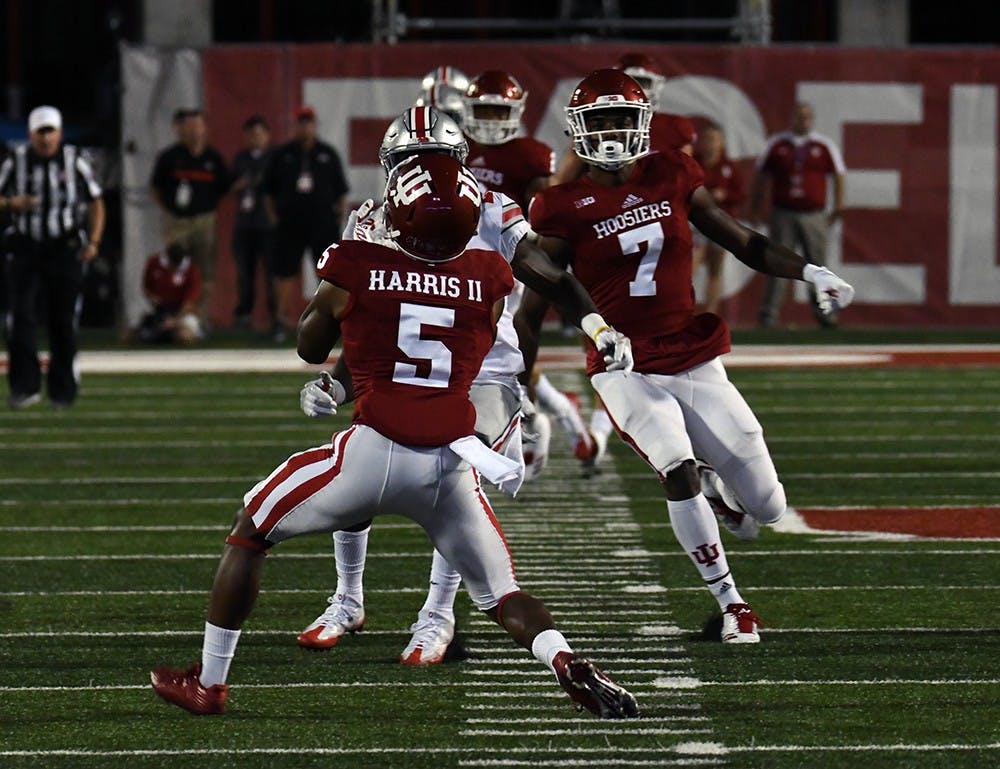Since his appointment as IU football head coach in December 2016, Tom Allen has stressed the importance of special teams.
While he's only been in charge of the Hoosiers for 13 games, Allen has made it clear in the media gatherings and postgame press conferences during this period he wants IU to win in the area of special teams, as any head coach would.
However, the difference between saying it and executing it was noticeable in 2017.
Based on the 2017 FEI Ratings for special teams by Football Outsiders, IU ranked 57th in special teams out of 130 FBS college football teams.
While IU benefitted from kicker Griffin Oakes returning to his 2015 form and a solid first year from punter Haydon Whitehead, the Hoosiers were inept on kick returns.
There was also no designated special teams coordinator for IU last season, although that wasn't something new for the program. Dating back to the 2014 season, IU only had one season, 2016, in which members of the coaching staff were listed as special teams coordinators.
Even then, it was a responsibility shared between Deland McCullough, who focused on the return units, and William Inge, who focused on the coverage units.
This will change in 2018 as Inge was named the full time special teams coordinator in January, following the hiring of Kane Wommack as the new linebackers coach.
It remains to be seen how Inge will fare during his first season in the role, but across the areas of kicking, kick return, punting and punt return, he will have his work cut out to maintain IU's success in certain areas, while also giving the team a needed boost in others.

KICKING
The good:
Griffin Oakes gave four seasons of extraordinary service to the IU football program. The only IU kicker to twice be named the Big Ten Conference's Bakken-Andersen Kicker of the Year, Oakes shook off an abnormal 2016 season to go 16 for 17 on field goals in 2017.
He didn't miss a single field goal inside 50 yards, and provided one of the most memorable moments of the season when he hit a 46-yard field goal as time expired to force overtime against then-No. 17 Michigan.
His lone missed extra point and field goal were blocked, but the season was a complete turnaround from the kicking woes of 2016.
It was a fitting end to the career of IU's all-time leader in field goals made.
The field goal kicking unit is centered around three positions: holder, kicker and long snapper, and IU will return two of three starters from these positions.
Senior Dan Godsil at long snapper and sophomore punter Drew Conrad at holder will both be returning for IU.
The bad:
All the reliability and security Oakes offered the Hoosier program is offset by a simple truth: he's gone.
IU has a slim chance of replacing him with a kicker of similar caliber, and the current stable of IU kickers has virtually no college experience.
Charles Campbell, Jack Cardillo, Elijah Hiltunen, Logan Justus, Jared Smolar and Nathanael Snyder have combined for three college game appearances, and all came courtesy of Smolar during his time at Rutgers in 2016, in which he didn't attempt a field goal.
Conrad and Godsil will provide welcomed guidance to whoever becomes the team's new kicker, but the unit as a trio will need to gel quickly, especially considering whoever wins the starting job will be kicking his first college field goals.
"It makes a huge difference," Campbell said. "Having them both start last year, they both know what they're doing and they're not going to be nervous. I'm just stepping in."
What to expect:
Campbell, a freshman who was a 3-star prospect by 247Sports, appears to be the leader in the clubhouse in the battle for the starting job. He took part in the 2018 U.S. Army All-American Bowl and joined the IU program to much fanfare on National Signing Day in December 2017.
"I want to be the clear-cut number one guy," Campbell said. "Obviously I need to work on technique, I need to visualize myself in situations. Like, if I have the game-winning kick, I need to visualize myself in practice kicking the game-winning kick."
It's an open competition for the starting kicker role, but it would be a surprise to not see Campbell be given the job on opening night.
It would be unreasonable to expect Campbell or any of the other kickers to replicate Oakes' performance in 2018, so Hoosier fans will likely have to be content with the kicking game going from an advantage to average.

KICKOFF / KICK RETURN
The good:
Not a whole lot. While kickoffs were a strongpoint for IU last season with Oakes blasting most of them into the end zone for touchbacks, the kick return game was useless for the Hoosiers.
Oakes' strong leg ensured most IU kickoffs weren't returned by opponents.
Aside from a 82-yard return allowed against Maryland, which was an off-the-mark game for all IU special teams units, and a game-opening 98-yard kick return touchdown by Penn State's Saquon Barkley, IU covered kickoffs as well as anyone else in the country.
However, there was nothing positive about IU's kick returns.
The bad:
IU's longest kick return of the 2017 season was 31 yards by former Hoosier Devonte Williams against Virginia.
More than any facet of the 2017 Hoosiers, a lack of game-altering plays from the kick return unit was the most noticeable in its absence. Kick returns can be used a source of momentum for teams prone to go through hot-and-cold periods offensively, like IU did last season.
Given the advantages IU had against opponents kicking and punting the ball, the Hoosiers' failure to make the kick return game a threat limited the success of the special teams unit.
Per Football Outsiders, IU was 94th in the country last season at kickoff return efficiency.
What to expect:
Oakes' replacement at kicker will likely be unable to match his 52-percent touchback rate on kickoffs next season, so Inge will have to put some focus on coverage patterns with IU having to make more tackles on kickoffs.
It wouldn't be too surprising to see IU go to a two-kicker format, with Campbell used for field goals and another kicker for kickoffs, but that will have to be determined during fall camp and based on the kickers' leg strength.
Williams was IU's primary kick return man last season, but he transferred to Southeastern Louisiana in January. So the Hoosiers will be looking for a new returner, a position usually filled by a skill position player with speed.
That player is yet to be determined, and it wouldn't be surprising to see IU cycle through a couple players during nonconference play before settling on one or two preferred options for the start of Big Ten play.

PUNTING
The good:
The Hoosiers changed punters in 2017, with Haydon Whitehead replacing Joseph Gedeon. The redshirt sophomore came to IU by way of Prokick Australia, a training program that helps transition kickers and former Australian Rules Football players from Australia to American-style football.
Whitehead's first season playing in America was an overwhelming success.
He landed 33 punts inside opponents' 20-yard line, and opponents only averaged five yards per punt return against the Hoosiers.
IU ranked 54th nationally in terms of punt efficiency per Football Outsiders.
Whitehead is one of two punters on the IU roster, along with Conrad, the holder on field goal kicks. Godsil, the long snapper for field goals, also does long snapping for punts and he returns for his senior season, keeping the Godsil-Whitehead duo in place.
The bad:
There's a lot to like about IU's punting team for next season, but an unknown is who will replace players like Chase Dutra when it comes to the punt coverage unit.
Dutra was a jack-of-all trades coverage man, and along with another senior, Rashard Fant, made savvy plays when on special teams. One of IU's younger members of the secondary will have to earn his way into a special teams coverage role, and as a unit, the Hoosiers will have to collectively make up for the presence Dutra and Fant provided on special teams.
What to expect:
It may not even matter who assumes Dutra and Fant's roles on special teams if Whitehead follows up his first season with an equally impressive second year for the Hoosiers.
There's no reason to think he would regress, especially since the long snapper-punter tandem remains the same.
Ending an offensive drive with a punt is never the ideal outcome, but IU's punts were an unexpected weapon for the team in 2017, and similar results should follow in 2018.

PUNT RETURN
The good:
The senior wide receiver is working his way back from a third ACL tear, all suffered during his time at IU. While Harris will take on an increased importance in the passing game this season as a pass catcher, he was electric in the punt return game for IU last season.
He had a pair of punt return touchdowns in victories against Virginia and Georgia Southern, in addition to separate returns of 43 yards against Virginia and 53 yards against Michigan.
"Being back there on punt returns, I want to go 100 percent," Harris said. "Catch every ball make every smart decision, and get as much field position as possible."
Despite suffering his latest season-ending injury in the loss at Maryland in IU's eighth game of the season, he finished the season tied for the most 40- and 30-plus-yard punt returns in the country.
However, he's on track with his recovery and should be available for IU come the start of the 2018 season.
"At this point I'm doing everything," Harris said. "In the weight room, squatting, power cleaning. Out in our player practices I'm doing individual. Here soon I should be 100 percent full go."
The bad:
IU's punt returns went from explosive to nonexistent following Harris' injury. It's not out of the question to wonder about Harris' ability to last an entire season with IU, as his 2015, 2016 and 2017 seasons all ended prematurely.
Wide receiver Whop Philyor looked to be a decent fill-in for Harris at the punt return spot in the final games of 2017, but his value as a wide receiver for this season may limit the desire of Inge to use him in a punt return capacity.
It's basically a Harris-or-bust situation for the Hoosiers.
What to expect:
When he's healthy, Harris is a threat in the return game, one IU desperately needs in its efforts to upset better Big Ten teams.
His track record of staying healthy is bad, though. Inge would be smart to have a return man ready to step into Harris' place if and when another injury takes place, preferably a skill position player without a ton of responsibility in terms of snaps at his position.




